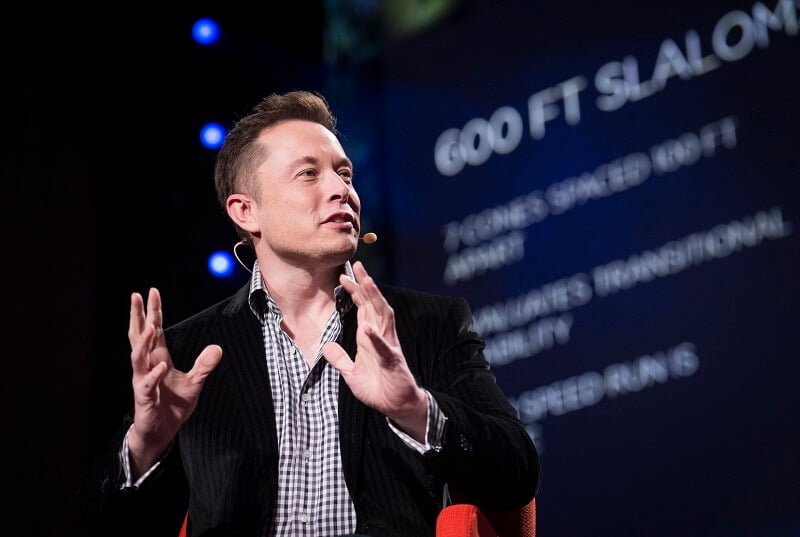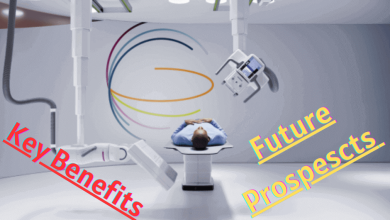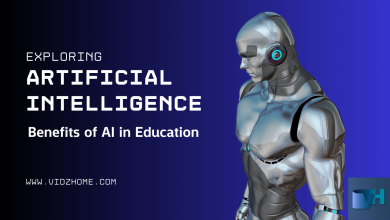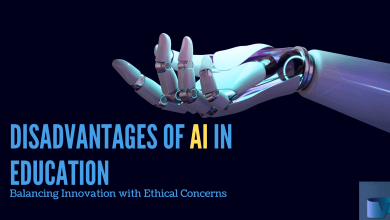
When dealing with languages, specifically linguistics, then Critical Discourse analysis is one of the most important domains that a Language Scientist needs to understand.
Here, we have a Critical Discourse Analysis Example that can help you understand the basic parts of the speech on which you need to focus while analyzing a speech.
What is Critical Discourse Analysis?
Critical Discourse analysis is the analysis of a text or speech that is aimed at getting the hidden meaning out of the text or speech.
It deals with the different socio-cultural, socio-economic, socio-political practices and the communicative approaches of that community where the is delivered.
In this post, an example of critical discourse analysis is discussed as the speech of Elon Musk, a well-known business man and philanthropist.
Here are 3 Most Basic Second Language Acquisition Theories
Critical Discourse Analysis Example (Elon Musk Speech)

“That was a white-knuckle event. It is a huge relief. I still can’t believe it actually happened.
But there’s lot more that must happen beyond this in order for humanity to become a spacefaring civilization and ultimately a multi-planet species. And that’s something I think it’s vitally important. And I hope that some of you will participate in that either at SpaceX or other companies. Because it’s just really one of the most important things for the preservation and extension of consciousness.
It’s worth noting as I’m sure people are aware that Earth has been around for 4 billion years, but civilization in terms of having writing has been about 10,000 years, and that’s being generous.
So, it’s really somewhat of a tenuous existence that civilization and consciousness has been on earth. I’m actually fairly optimistic about the future of earth. I don’t want to people sort of have the wrong impression like we’re all about to die. I think things will most likely be okay for a long time on earth. Not for sure, but, most likely.”
But even if it’s 99% likely, a 1% chance is still worth spending a fair bit of effort to ensure that we have — back up the biosphere, and planetary redundancy if you will. And I think it’s really quite important.
And in order to do that, there’s breakthrough that needs to occur which is to create a rapidly and completely reusable transport system to Mars, which is one of those things that’s right on the borderline of even impossible. But that’s the sort of the thing that we’re going to try to achieve with SpaceX.
And then, on the Tesla front, the goal with Tesla was really to try to show what electric cars can do. Because people had the wrong impression, and we had to change people’s perceptions of electric vehicle. Because they used to think of it as something that was slow and ugly, with low range, like a golf cart. So, that’s why we created the Tesla Roadster, to show that it can be fast, attractive and long range.
And it’s amazing how — even though you can show that something works on paper, and the calculations are very clear, until you actually have the physical object, and they can drive it, it doesn’t really sink in for people. So that I think is something worth nothing.
If you’re going to create a company, the first thing you should try to do is create a working prototype. Everything looks great on PowerPoint. You can make anything work on PowerPoint. But, if you have an actual demonstration article, even if it’s in primitive form, that’s much more effective in convincing people.
So, we made the Tesla Roadster, and now we’re coming out soon with model S, which is a 4-door sedan. Because after we made the Tesla Roadster people said, ‘oh sure, sure we always knew you could make a car like that, it’s an expensive car and it’s low volume and small and all that but can you make a real car?’ Okay, fine, we’re going to make that, too. So, that’s coming out soon.
And so that’s where things are and hopefully, there are lessons to be drawn there.
I think the overreaching point I want to make is that: You guys are the magicians of the 21st century. Don’t let anything hold you back. Imagination is the limit. Go out there and create some magic.
Thank you.”
Elon Musk
Now, from this Critical Discourse Analysis example, we will find some basic discourse components.
Top 9 Benefits of Training and Development (by Specialists)
Stance Strategies
Boosters
In Critical Discourse Analysis, Boosters are the words that emphasize on a certain point.
- That was a white-knuckle event
- It is a huge relief
- I still can’t believe it actually happened
- But there’s lot more
- a multi-planet species
- I think it’s vitally important
- “Because it’s just really one of the most important things
- extension of consciousness.”
- “it’s really somewhat of a tenuous existence
- “I’m actually fairly optimistic about the future of earth”
- I think things will most likely be okay for a long time on earth
- a 1% chance is still worth spending a fair bit
- And I think it’s really quite important.
- there’s breakthrough that needs
- to create a rapidly and completely reusable transport system
- to achieve with SpaceX.
- the goal with Tesla was really to try
- that it can be fast, attractive and long range.
- And it’s amazing how
- calculations are very clear, until you actually have the physical object
- it doesn’t really sink in for people.
- I think is something worth nothing.
- create a working prototype.
- Everything looks great on PowerPoint
- if you have an actual demonstration article
- that’s much more effective in convincing people.
- it’s an expensive car
- can you make a real car?
- that’s coming out soon.
- where things are and hopefully
- I think the overreaching point
- You guys are the magicians of the 21st century.
- Imagination is the limit
- Go out there and create some magic.
The above all are the example of boosters from above speech because they boost or emphasize respective ideas.
Hedges
Following all are considered as the examples of hedges because they de-emphasize the ideas being talked about in Critical Discourse Analysis.
- it’s really somewhat of a tenuous existence
- sort of have the wrong impression
- But even if it’s 99% likely
- planetary redundancy if you will
- the borderline of even impossible.
- Because people had the wrong impression
- that was slow and ugly, with low range
- doesn’t really sink in for people
- if it’s in primitive form
- it’s low volume and small
- Don’t let anything hold you back
Self-Mentions
“I” is used as a self-mention like in following examples:
- “I still can’t believe”
- “something I think it’s vitally important”
“We” is used as a self mention in the lines:
- “we’re all about to die”
- “we had to change people’s perceptions”
- “we’re going to make that”
- “we made the Tesla Roadster, and now we’re coming out soon with model S.”
Attitude Markers
Following all are the example attitude markers in critical Discourse Analysis as they show the attitude of the speaker toward his ideas.
- I still can’t believe it actually happened
- And that’s something I think it’s vitally important.
- And I hope that some of you
- as I’m sure people are aware
- I’m actually fairly optimistic about the future
- I don’t want to people sort of have the wrong impression
- I think things will most likely be okay
- Not for sure, but, most likely
- And I think it’s really quite important.
- which is one of those things that’s right on the borderline of even impossible
- the goal with Tesla was really to try to show what electric cars can do
- And it’s amazing how
- So that I think is something worth nothing.
- I think the overreaching point
- I want to make is that
- You guys are the magicians of the 21st century
Change into Negative Sentence (without Changing Meaning)
Engagement Strategies
Reader Pronoun
“You” has been used various times as the reader pronoun in the speech. For Example:
- And I hope that some of you will participate
- planetary redundancy if you will
- until you actually have the physical object
- Don’t let anything hold you back
Appeal to shared knowledge
Following mentioned are the examples of appeals to share knowledge in critical discourse analysis as they seek to position readers using some phrase that is to direct attention towards certain things, that is common knowledge between the speaker and the listeners.
- I’m sure people are aware that Earth has been around for 4 billion years
- but civilization in terms of having writing has been about 10,000 years
- But that’s the sort of the thing that we’re going to try to achieve with SpaceX.
- we had to change people’s perceptions of electric vehicle.
- Because they used to think of it as something that was slow and ugly
- that’s why we created the Tesla Roadster
- Everything looks great on PowerPoint
- oh sure, sure we always knew you could make a car like that,
Directives
These are examples of imperative sentences thus taken as directives in critical discourse analysis.
- the first thing you should try to do is create a working prototype
- Don’t let anything hold you back.
- Go out there and create some magic.
Personal asides
For the Critical Discourse Analysis of a Speech there are no personal asides and as this is a speech so there are no personal asides.
Questions
Here is a question asked in the speech that could be analyzed in Critical Discourse Analysis
- but can you make a real car?
Importance of Presentation Skills
Speech Act
Indirect Speech Acts
“You guys are the magicians of the 21st century.”
Musk is motivating the new generation that they can do wonders and bring great changes.
“Go out there and create some magic.”
Here, Musk is telling the new generation to do great things and follow their passions.
Language Attitudes in Sociolinguistics
Maxims
As it is a Speech and there is no dialogue going on thus, it contains no maxims.
Implicatures
Conversational Implicatures
Conversational implicatures are formed by either flouting of two maxims or clash of two maxims. A speech contains no maxims thus no conversational implicatures are found.
Conventional Implicatures
“But” is used as conventional implicature because it is used to express contrast:
- But there’s lot more that must happen
- But, if you have an actual demonstration article
- that but can you make a real car
“Even” is used as conventional implicature to suggest something that is contrary to the expectations
- But even if it’s 99% likely
- that’s right on the borderline of even impossible
- even if it’s in primitive form
“Until” is used to suggest the point in time or an event:
- until you actually have the physical object
Branches of Phonetics in Linguistics
Politeness
And I hope that some of you will participate in that either at SpaceX or other companies.
We see the speaker taking into account the social distance between him and his listeners and the power of the listeners, creating politeness, while asking them to join his cause:
I don’t want to people sort of have the wrong impression like we’re all about to die
We see the speaker taking into account the significance of his words and their effect on the listeners thus, creating politeness.
Sequence
Opening Conversation
“That was a white-knuckle event.”
The opening is conversational and explanatory.
Closing Conversation
“Don’t let anything hold you back. Imagination is the limit. Go out there and create some magic.
Thank you”
The closing is directive and conversational.
Turn-Taking, Adjacency Pairs, Insertion sequences, Feedback and Repair
All these are not found in the speech because they require at least two speakers.
Discourse Markers
Functional Discourse Markers
“But” is used as discourse markers to preface an idea unit:
- But there’s lot more that must happen
- But, if you have an actual demonstration article
- that but can you make a real car
“Because” is used as discourse marker to give meaning to what is said:
- Because it’s just really one of the most important things
- Because people had the wrong impression
- Because after we made the Tesla Roadster
“And” is used as a discourse marker to add to the idea:
- And that’s something I think it’s vitally important.
- that civilization and consciousness has been on earth.
- it’s an expensive car and it’s low volume
“So” is used as a discourse marker to show that the speaker is going to provide an answer:
- So, it’s really somewhat of a tenuous existence
- So that I think is something worth nothing.
- So, we made the Tesla Roadster
Extent Markers
“Really” is used as a discourse marker in order to show the extent of something:
- Because it’s just really one of the most important things
- And I think it’s really quite important.
- it doesn’t really sink in for people
“Actually” is used as a discourse marker in order to show the extent of something:
- I still can’t believe it actually happened.
- until you actually have the physical object
Cohesion
Anaphoric Cohesion
“there’s breakthrough that needs to occur which is to create a rapidly and completely reusable transport system to Mars, which is one of those things that’s right on the borderline of even impossible. But that’s the sort of the thing that we’re going to try to achieve with SpaceX.”
The subject that is being referred to comes before reference. Here, that refers to reusable transport system.
Cataphoric Cohesion
It is not present in the speech.
Conjunctions
Causal
“Because” is used as causal conjunction, it gives the relationship of cause and consequence:
- Because it’s just really one of the most important things
- Because people had the wrong impression
- Because after we made the Tesla Roadster
Temporal
“First” is used as temporal conjunction, it shows the events in a text related to their timing of occurrence.
- the first thing you should try to do is create a working prototype.
Additive
“And” is used as additive conjunction because it signals the presence of additional information.
- And that’s something I think it’s vitally important.
- that civilization and consciousness has been on earth.
- it’s an expensive car and it’s low volume
Adversative
“But” is used as adversative conjunction as it expresses opposition or contrast between the statements.
- But there’s lot more that must happen
- But, if you have an actual demonstration article
- that but can you make a real car
Conclusion
s



